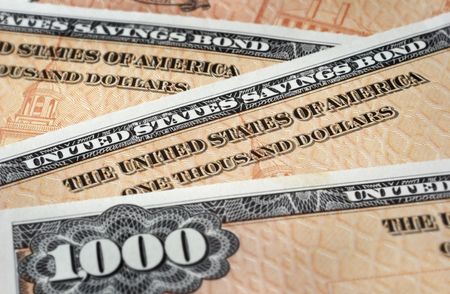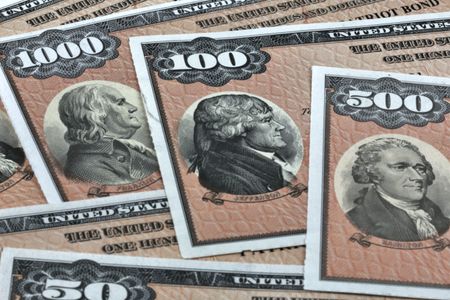Target Funds Under Fire
Critics take aim at one-stop retirement solutions. But for most people, they're still the best way to save.
What's destined to become the most popular retirement-savings investment is sporting a bull's-eye. A growing chorus of critics have put target-date funds in their cross hairs, accusing them of being inflexible, too risky or too hidebound. Oh, yes, naysayers also say the funds lull you into a false sense of security.
That these fast-growing funds are catching flak from experts and each other isn't surprising, considering the vast amounts of dollars at stake. "All these new products need to differentiate themselves," says Luis Fleites, director of retirement research for consulting firm Financial Research.
| Row 0 - Cell 0 | How to Pick a Target Fund |
| Row 1 - Cell 0 | ETFs Target Retirement |
But don't let debate shake your faith. Much of the noise surrounding target-date funds is the industry overthinking a sweet and simple concept. Some of these funds remain great choices, especially our longtime favorites.

Sign up for Kiplinger’s Free E-Newsletters
Profit and prosper with the best of expert advice on investing, taxes, retirement, personal finance and more - straight to your e-mail.
Profit and prosper with the best of expert advice - straight to your e-mail.
Target-date funds simplify long-term investing. Choose the year you wish to retire, then pick the fund with the date closest to your target. So, for example, if you're 35 and plan to retire in 2038, you'd choose a fund with 2040 in its name. These funds are a balanced meal of investments, complete with big-company stocks, small-company stocks, bonds and often less-traditional assets, such as emerging-markets stocks and real estate stocks.
As the fund approaches the target date, it becomes more conservative, lowering the percentage of assets in stocks in favor of more bonds and cash. This "glide path" is meant to dampen the fund's volatility, helping reduce the likelihood of big losses as you near retirement.
Money in target-date funds has grown like kudzu since their introduction around the beginning of this decade -- from $12.3 billion in 2001 to $168 billion at last word. The number of fund families offering target-date funds has jumped from a handful five years ago to 35 today.
That number is bound to rise, thanks to a recent ruling by Uncle Sam. The U.S. Department of Labor recently issued guidelines that place target funds on the short list of approved default investments in employer-sponsored retirement plans.
Getting aggressive
In an effort to improve performance and break from the pack, many target-date funds have boosted their holdings in riskier investments. While more-aggressive target-date funds topped out at 80% stock allocations three years ago, some now have as much as 94% in stocks, says Hewitt Associates, a human-resources consulting firm.
The growing slice of foreign stocks, in particular, underscores the push toward performance and the divergence among target-date funds. In recent years, one of the best ways to crank up a portfolio's performance has been to look overseas. The MSCI EAFE index, a widely used barometer of performance in developed foreign markets, returned an annualized 22% over the past five years to December 3. Standard & Poor's 500-stock index gained 11% annualized over that period.
[page break]
Vanguard's target-date funds have up to 18% of their stock allocations in overseas companies. Compare that with the 22% maximum in T. Rowe Price target funds and the 35%-plus maximum in AllianceBernstein and John Hancock target funds.
Is putting so much in foreign stocks the right move? Time will tell. But you don't want your target-date fund to chase fads. Says John Ameriks, an analyst in the investment-counseling and research group at Vanguard: "I think a lot of the foreign-stock popularity is more about recent performance than good investing."
Just how quickly a fund company changes the mix in its target-date funds -- or should change it -- is also a matter of debate. At one end of the spectrum is Vanguard, which keeps the mix in its target funds fairly static. T. Rowe Price, on the other hand, is more willing to change the mixes of its target funds.
Price's target portfolios, for example, now favor big-company stocks over small-company issues, and growth companies over value stocks. "We do this in a very tightly controlled band," says Jerome Clark, manager of Price's retirement funds. He won't deviate from what a fund would typically hold in a particular asset category by more than five percentage points.
The tactical tinkering with fund proportions does affect returns, Clark says, but not by much. Clark says the major factors responsible for the funds' returns are their allocations to broad asset classes, such as U.S. stocks, foreign stocks and bonds.
Investors need to keep in mind how actively a target fund is managed before choosing one. Andrew Clark, head of Americas research for fund-data provider Lipper, says investors should assess their comfort level. "Are you picking a target-date fund because you want consistency?" he asks. "Then I'd stick with Vanguard or similar funds," such as those offered by AllianceBernstein.
Soft landing
Two key premises of target-date funds are that they're simple and that they stick closely to a designated stock-and-bond mix over time. But even those principles are being challenged.
Compass Institute, a think tank on retirement-plan strategies, warns that many target-date-fund investors will end up with insufficient nest eggs because glide paths are too rigid. Compass recommends a strategy of shifting from stocks to bonds and cash during falling stock markets, and doing the reverse during stock-market run-ups. Compass calls its strategy "risk management asset allocation." But to us, it sure looks a lot like market timing, a practice that target-date investors should avoid.
Some companies want to take a multiple-choice approach to target-date funds. For example, Old Mutual Asset Management and Wilshire Funds Management are developing different funds for different target dates with varying stock and bond mixes. The idea is that investors who feel they need to earn more money or want more risk will go with, say, the Target Date 2040 Aggressive fund, while others who have already achieved their goals or want to avoid risk will invest in the Target Date 2040 Conservative fund.
But there are a couple of problems with such an approach. First, providing more choices could confuse investors and may dissuade them from investing in any target-date plan. Second, switching to a riskier portfolio is a questionable way to make up for lost time. The prudent way is to save more or to delay retirement.
[page break]
"No investment mix in the world is going to save someone if she or he hasn't put enough money toward retirement," says Don Stone, president of Plan Sponsor Advisors, a retirement-plan consulting firm.
Just as important as determining your savings rate is tracking the perform-ance of your target-date fund. "This is not a set-it-and-forget-it solution," says John Deyeso, a financial planner in New York City. Unfortunately, sizing up your target-date fund's return isn't as simple as, say, comparing your big-company stock fund with the S&P 500.
Target-date funds have so many components that the best way of judging them may be to compare them against other target-date funds. You can also compare target funds against the Dow Jones Target Date Indexes (available for free at www.djindexes.com).
All the criticisms aside, we like target-date funds because they do for you what you often can't do for yourself. John Hancock recently released a study showing that over the past ten years, 84% of those who invested on their own inside a 401(k) would have earned more in a Hancock target-date fund.
Those who invested in target-date funds (and similarly diversified portfolios before target funds were invented) earned an average of two percentage points per year more than those who invested on their own.
The Hancock study found that investors who didn't hold target-date funds made classic mistakes that cost them money over the long run. They put most of their money into funds that were popular at the time they enrolled in a retirement plan and made few changes afterward. And they tended to have either very risky or very conservative portfolios. A diversified portfolio is "the only free lunch" in investing, says Bob Boyda, senior vice-president of investment management services at Hancock. "It's proven to earn you more and let you sleep better at night."
The big picture
In fact, one of the biggest problems target-fund investors have to contend with is over-diversification. This happens when they hold other funds in addition to their target funds or, a more-likely situation, they hold a lot of stock or cash in other accounts.
You may own a terrific target fund, but you'll throw your path toward safety out of whack if you also hold a wad of stock. Similarly, if you're 30 years from your goal, you will undermine your target fund's aggressive allocation if you hold chunks of bonds and cash elsewhere. So it's important for investors to consider all their holdings.
Target funds may not be the be-all and end-all of retirement investing, but as Vanguard's Ameriks says: "If you never make another investing decision in your life, it's not a bad one. And if you want to do better than this, it's going to take some work."
Get Kiplinger Today newsletter — free
Profit and prosper with the best of Kiplinger's advice on investing, taxes, retirement, personal finance and much more. Delivered daily. Enter your email in the box and click Sign Me Up.

-
 Stock Market Today: Stocks Are Mixed Before Liberation Day
Stock Market Today: Stocks Are Mixed Before Liberation DayMarkets look forward to what comes with the reordering of 80-year-old global trade relationships.
By David Dittman Published
-
 Stagflation: What It Is and Why Retirees Should Care
Stagflation: What It Is and Why Retirees Should CareStagflation — the economic bogeyman of the 1970's — may return to the US. Here's what it could mean to your retirement.
By Donna Fuscaldo Published
-
 Best Banks for High-Net-Worth Clients 2024
Best Banks for High-Net-Worth Clients 2024wealth management These banks welcome customers who keep high balances in deposit and investment accounts, showering them with fee breaks and access to financial-planning services.
By Lisa Gerstner Last updated
-
 Stock Market Holidays in 2025: NYSE, NASDAQ and Wall Street Holidays
Stock Market Holidays in 2025: NYSE, NASDAQ and Wall Street HolidaysMarkets When are the stock market holidays? Here, we look at which days the NYSE, Nasdaq and bond markets are off in 2025.
By Kyle Woodley Last updated
-
 Stock Market Trading Hours: What Time Is the Stock Market Open Today?
Stock Market Trading Hours: What Time Is the Stock Market Open Today?Markets When does the market open? While the stock market does have regular hours, trading doesn't necessarily stop when the major exchanges close.
By Michael DeSenne Last updated
-
 Bogleheads Stay the Course
Bogleheads Stay the CourseBears and market volatility don’t scare these die-hard Vanguard investors.
By Kim Clark Published
-
 The Current I-Bond Rate Until May Is Mildly Attractive. Here's Why.
The Current I-Bond Rate Until May Is Mildly Attractive. Here's Why.Investing for Income The current I-bond rate is active until November 2024 and presents an attractive value, if not as attractive as in the recent past.
By David Muhlbaum Last updated
-
 What Are I-Bonds? Inflation Made Them Popular. What Now?
What Are I-Bonds? Inflation Made Them Popular. What Now?savings bonds Inflation has made Series I savings bonds, known as I-bonds, enormously popular with risk-averse investors. So how do they work?
By Lisa Gerstner Last updated
-
 This New Sustainable ETF’s Pitch? Give Back Profits.
This New Sustainable ETF’s Pitch? Give Back Profits.investing Newday’s ETF partners with UNICEF and other groups.
By Ellen Kennedy Published
-
 As the Market Falls, New Retirees Need a Plan
As the Market Falls, New Retirees Need a Planretirement If you’re in the early stages of your retirement, you’re likely in a rough spot watching your portfolio shrink. We have some strategies to make the best of things.
By David Rodeck Published
